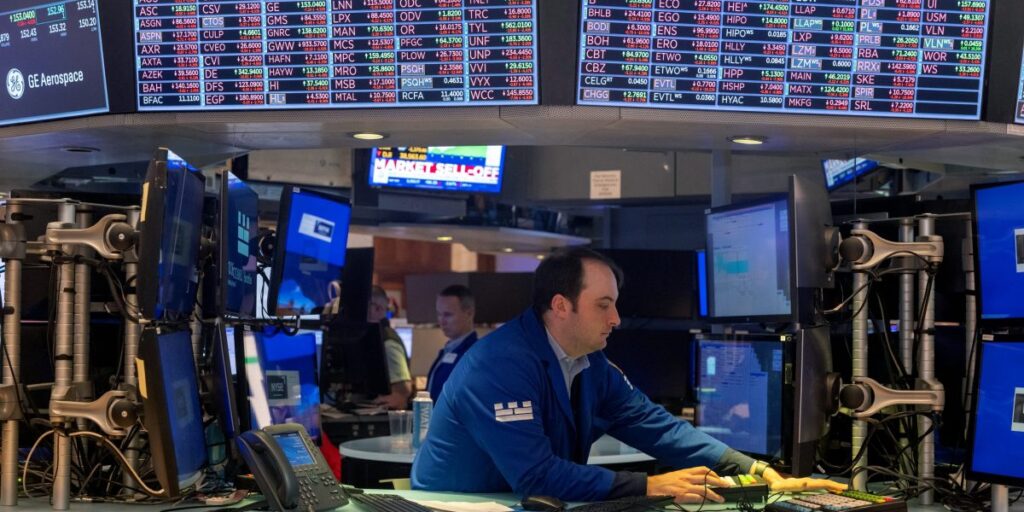Solana suffers 30% weekly drop as alt-coins hammered in crypto crash
Fringe coins are feeling the brunt of the cryptocurrency market’s mass liquidations over recent days.


With the cryptocurrency market in free fall, the industry’s so-called alt-coins are experiencing the sharpest drops. Solana, Link and Uniswap tokens are all down 30% over the past week, according to CoinGecko data. Meanwhile, memecoins such as Dogecoin and Pepe are down 27% and 39%, respectively.
Over the past day, traders have liquidated over $1.23 billion worth of crypto, according to CoinGlass data, and Bitcoin exchange-traded funds recorded $237.4 million of outflows on Friday, the third-worst day trading since the spot ETFs opened for business in January.
Why is the crypto market down?
The collapse is in response to a stock market meltdown. Since Wednesday, the S&P 500 is down 5.5%, and the Nasdaq has lost 8%. The Vix index which tracks stock market volatility—often dubbed Wall Street’s “fear gauge”—shot up by one-third, to over 65 points, on Monday, the highest level since the early days of the pandemic.
Cryptocurrencies are considered volatile assets, so, when wider stock market sentiment grows uneasy, crypto often sees the biggest price swings, as traders liquidate their positions, and vice versa. For instance, in mid-May, Bitcoin rallied on better-than-expected inflation data. But, just two weeks prior, it fell 11% in a day once hopes of interest rates dwindled. “Reminder: Crypto is an important hedge against the global economy. When stocks are down 2%, crypto is down 20%,” one X user wrote on Sunday.
With smaller market caps, memecoins are considered to be the riskier corners of crypto, thus it’s unsurprising that the market downturn is most pronounced among fringe coins. For example, Bitcoin, the largest tokens by market capitalization, has recorded a substantial 20% decline over the last week—a big drop but one far surpassed by memecoin losses.
Memecoins “are the highest risk and highest reward part of the industry, known for their wild price swings. They act as the canaries in the coal mine,” Jonathan Bixby, chairman of Phoenix Digital Assets, told Fortune.
Why is the stock market down?
The stock market volatility can be explained by a closer look at the handful of tech stocks at the top of those indexes, which have been carrying the market this year thanks to AI’s “fear of missing out” effect on investors. Now, there are signs this bubble may be bursting. Investors are losing confidence that tech companies will be able to generate returns to justify the billions invested in AI, and those fears have been legitimized over the past week, thanks to disappointing earnings’ reports. On Monday, Nvidia is down 6.5%, while Apple shares were down 4.29%.
The negative market trend is also influenced by a number of macroeconomic factors, according to Matteo Greco, Research Analyst Fineqia International.
“The Bank of Japan recently raised interest rates for the first time in 17 years due to concerns over the Yen’s declining purchasing power against the U.S. Dollar. The BOJ also signaled that further rate hikes could be on the horizon, if necessary, which was viewed negatively by risk-on asset markets, triggering widespread selloffs,” Greco wrote in a research note.
Worries over the currency’s purchasing power has triggered the unwinding of the so-called Yen ‘carry trade.’ The trade works like this: investors borrow Yen, because, in Japan, interest rates are low. Investors use the loans to invest in a currency where interest rates are high. This trade relies on the borrowing currency remaining cheap, and market volatility remaining low. However, the Yen has surged in recent weeks—up around 8% against the U.S. dollar over the last month—and the Nikkei plunged 12% on Monday, the highest rate since 1987. This is forcing carry trade investors to close out their positions, and the U.S. stock market is reacting badly.
A third macroeconomic reason for the stock market volatility: disappointing job data. On Friday, the Bureau of Labor Statistics reported an increase of 114,000 in July, lower than the 175,000 expected. On top of this, June and May’s gains were revised to be lower than first reported. In addition, July’s unemployment rate rose to 4.3%, from 4.1% the prior month.





